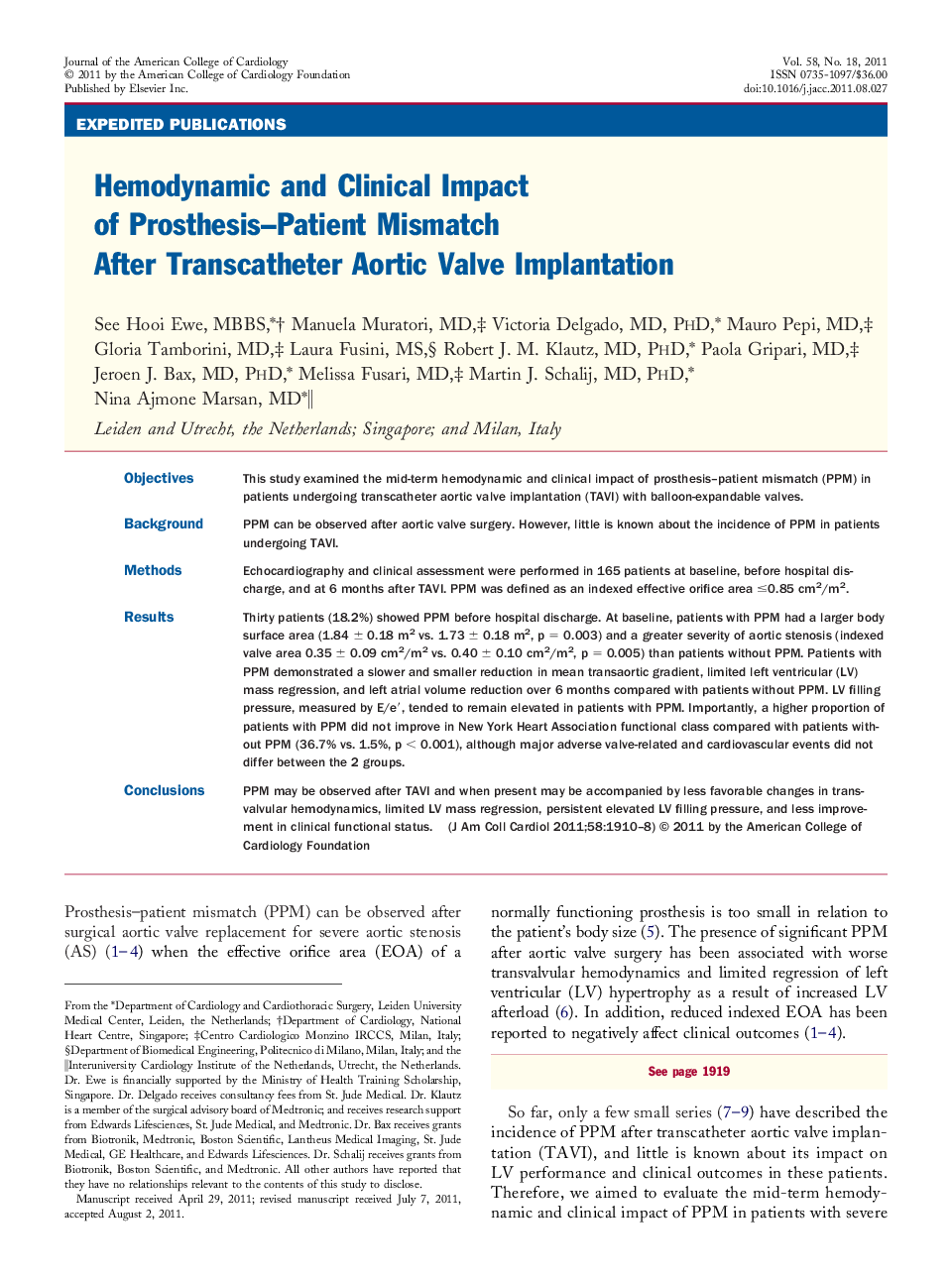| Article ID | Journal | Published Year | Pages | File Type |
|---|---|---|---|---|
| 5983494 | Journal of the American College of Cardiology | 2011 | 9 Pages |
ObjectivesThis study examined the mid-term hemodynamic and clinical impact of prosthesis-patient mismatch (PPM) in patients undergoing transcatheter aortic valve implantation (TAVI) with balloon-expandable valves.BackgroundPPM can be observed after aortic valve surgery. However, little is known about the incidence of PPM in patients undergoing TAVI.MethodsEchocardiography and clinical assessment were performed in 165 patients at baseline, before hospital discharge, and at 6 months after TAVI. PPM was defined as an indexed effective orifice area â¤0.85 cm2/m2.ResultsThirty patients (18.2%) showed PPM before hospital discharge. At baseline, patients with PPM had a larger body surface area (1.84 ± 0.18 m2 vs. 1.73 ± 0.18 m2, p = 0.003) and a greater severity of aortic stenosis (indexed valve area 0.35 ± 0.09 cm2/m2 vs. 0.40 ± 0.10 cm2/m2, p = 0.005) than patients without PPM. Patients with PPM demonstrated a slower and smaller reduction in mean transaortic gradient, limited left ventricular (LV) mass regression, and left atrial volume reduction over 6 months compared with patients without PPM. LV filling pressure, measured by E/eâ², tended to remain elevated in patients with PPM. Importantly, a higher proportion of patients with PPM did not improve in New York Heart Association functional class compared with patients without PPM (36.7% vs. 1.5%, p < 0.001), although major adverse valve-related and cardiovascular events did not differ between the 2 groups.ConclusionsPPM may be observed after TAVI and when present may be accompanied by less favorable changes in transvalvular hemodynamics, limited LV mass regression, persistent elevated LV filling pressure, and less improvement in clinical functional status.
